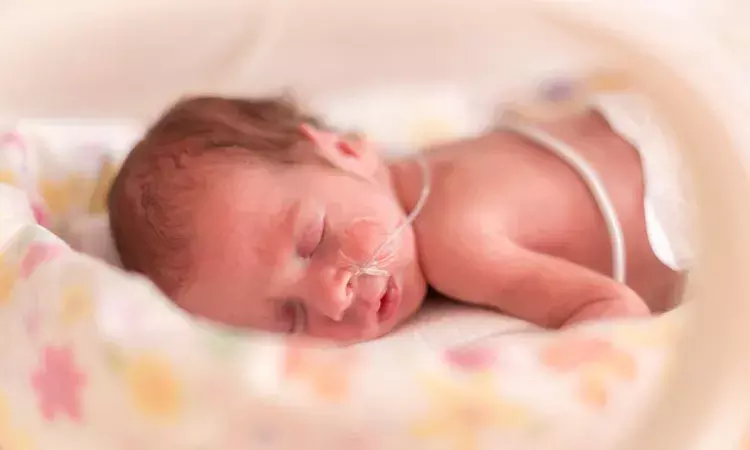- Home
- Medical news & Guidelines
- Anesthesiology
- Cardiology and CTVS
- Critical Care
- Dentistry
- Dermatology
- Diabetes and Endocrinology
- ENT
- Gastroenterology
- Medicine
- Nephrology
- Neurology
- Obstretics-Gynaecology
- Oncology
- Ophthalmology
- Orthopaedics
- Pediatrics-Neonatology
- Psychiatry
- Pulmonology
- Radiology
- Surgery
- Urology
- Laboratory Medicine
- Diet
- Nursing
- Paramedical
- Physiotherapy
- Health news
- Fact Check
- Bone Health Fact Check
- Brain Health Fact Check
- Cancer Related Fact Check
- Child Care Fact Check
- Dental and oral health fact check
- Diabetes and metabolic health fact check
- Diet and Nutrition Fact Check
- Eye and ENT Care Fact Check
- Fitness fact check
- Gut health fact check
- Heart health fact check
- Kidney health fact check
- Medical education fact check
- Men's health fact check
- Respiratory fact check
- Skin and hair care fact check
- Vaccine and Immunization fact check
- Women's health fact check
- AYUSH
- State News
- Andaman and Nicobar Islands
- Andhra Pradesh
- Arunachal Pradesh
- Assam
- Bihar
- Chandigarh
- Chattisgarh
- Dadra and Nagar Haveli
- Daman and Diu
- Delhi
- Goa
- Gujarat
- Haryana
- Himachal Pradesh
- Jammu & Kashmir
- Jharkhand
- Karnataka
- Kerala
- Ladakh
- Lakshadweep
- Madhya Pradesh
- Maharashtra
- Manipur
- Meghalaya
- Mizoram
- Nagaland
- Odisha
- Puducherry
- Punjab
- Rajasthan
- Sikkim
- Tamil Nadu
- Telangana
- Tripura
- Uttar Pradesh
- Uttrakhand
- West Bengal
- Medical Education
- Industry
Increasing trend observed recently for active treatment to babies born extremely preterm: JAMA

USA: A new study published in the Journal of American Medical Association (JAMA) shows that extremely preterm infants were more likely to get active therapy in recent years, but care varied by racial and ethnic group.
The choice to begin active life-saving therapy is difficult since birth in the peri-viable period between 22 weeks and 25 weeks and 6 days of gestation is a major cause of infant illness and death. Kartik Venkatesh and colleagues conducted this study in order to determine if the prevalence of active treatment among live-born neonates in the peri-viable period had changed over time and whether active treatment varied by gestational age at birth, race, and ethnicity.
The National Center for Health Statistics natality data for 61 908 singleton live births without clinical abnormalities between 22 weeks 0 days and 25 weeks 6 days in the US were used in this serial cross-sectional descriptive analysis from 2014 to 2020. In this study, the following factors were taken into account: gestational age at birth, year of delivery, and the expectant woman's race and ethnicity, broken down into non-Hispanic Black, non-Hispanic Asian/Pacific Islander, Hispanic/Latina, and non-Hispanic White.
The key outcome was active treatment, which was specified as a composite of surfactant therapy, immediate support breathing at delivery, assisted ventilation lasting more than 6 hours, and/or antibiotic therapy, and was based on whether an attempt was made to treat the neonate. Estimates were made for mean annual percent change (APC), frequencies, and adjusted risk ratios (aRRs).
The key findings of this study were:
1. The final study included 62,000 severely preterm neonates out of the over 27 million live births in the U.S.
2. Medicaid supported 54% of births, and the median mother age was 28.
3. In the research, 37% of the newborns were Black, 24% were Hispanic, and 34% were White. And about 5% of the children were Asian or Pacific Islander.
4. Surfactant therapy, rapid supported breathing at delivery (96%), assisted ventilation for more than 6 hours (60%) and antibiotic therapy (47%) were all administered to roughly 45% of patients who got active treatment.
5. Babies born to Asian or Pacific Islander, Black, or Hispanic parents were less likely to undergo active therapy than babies born to white parents.
6. People of color had a considerably lower likelihood of receiving active therapy for infants born at 23, 24, and 25 weeks gestation.
In conclusion, there were disparities in rates of active treatment by race and ethnicity between 2014 and 2020 in the US, and the frequency of active therapy among neonates delivered alive between 22 weeks 0 days and 25 weeks 6 days rose considerably throughout that time.
Source:
Venkatesh, K. K., Lynch, C. D., Costantine, M. M., Backes, C. H., Slaughter, J. L., Frey, H. A., Huang, X., Landon, M. B., & Grobman, W. A. (2022). Trends in Active Treatment of Live-born Neonates Between 22 Weeks 0 Days and 25 Weeks 6 Days by Gestational Age and Maternal Race and Ethnicity in the US, 2014 to 2020. In JAMA (Vol. 328, Issue 7, p. 652). American Medical Association (AMA). https://doi.org/10.1001/jama.2022.12841
Neuroscience Masters graduate
Jacinthlyn Sylvia, a Neuroscience Master's graduate from Chennai has worked extensively in deciphering the neurobiology of cognition and motor control in aging. She also has spread-out exposure to Neurosurgery from her Bachelor’s. She is currently involved in active Neuro-Oncology research. She is an upcoming neuroscientist with a fiery passion for writing. Her news cover at Medical Dialogues feature recent discoveries and updates from the healthcare and biomedical research fields. She can be reached at editorial@medicaldialogues.in
Dr Kamal Kant Kohli-MBBS, DTCD- a chest specialist with more than 30 years of practice and a flair for writing clinical articles, Dr Kamal Kant Kohli joined Medical Dialogues as a Chief Editor of Medical News. Besides writing articles, as an editor, he proofreads and verifies all the medical content published on Medical Dialogues including those coming from journals, studies,medical conferences,guidelines etc. Email: drkohli@medicaldialogues.in. Contact no. 011-43720751


